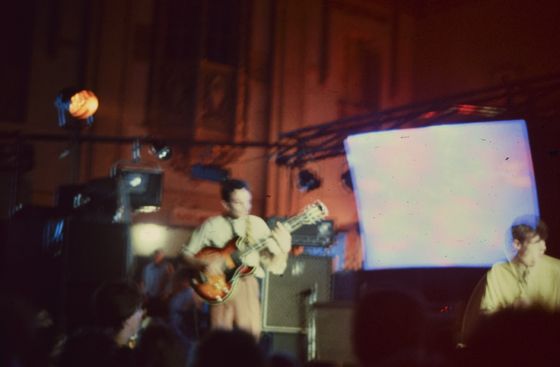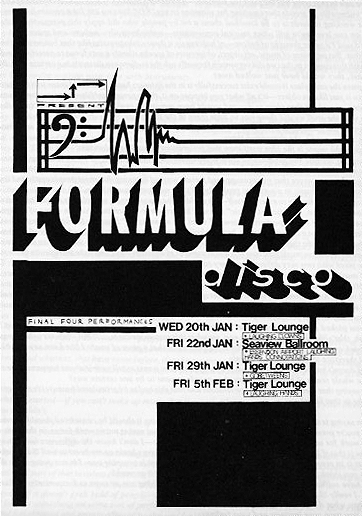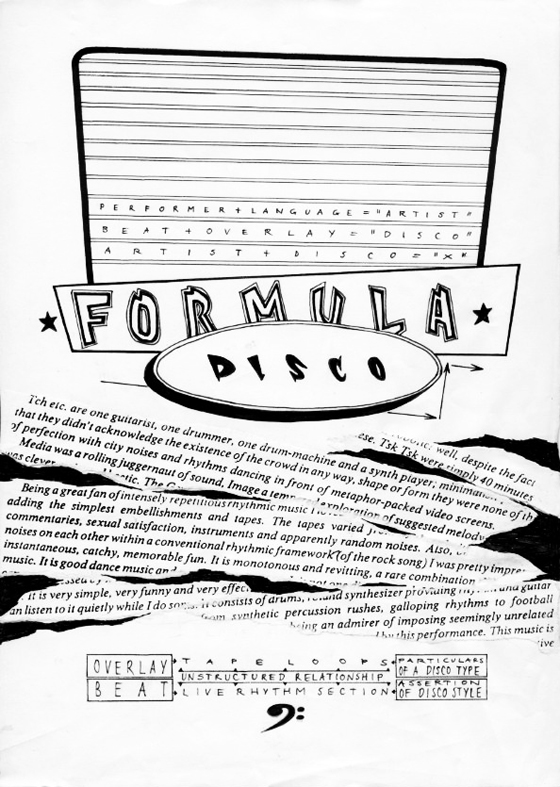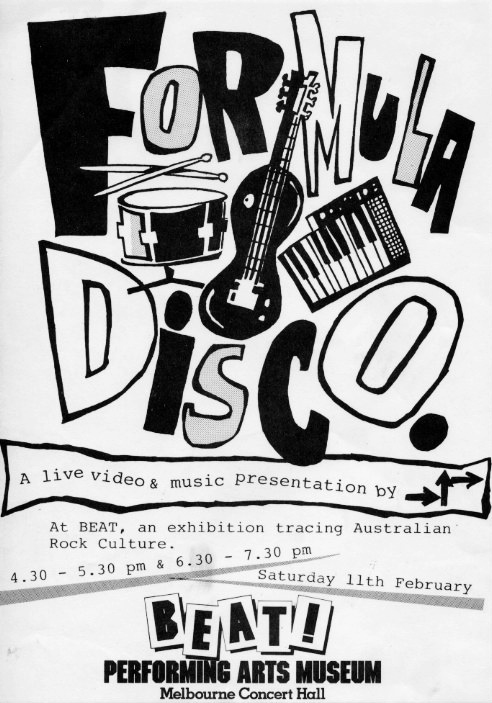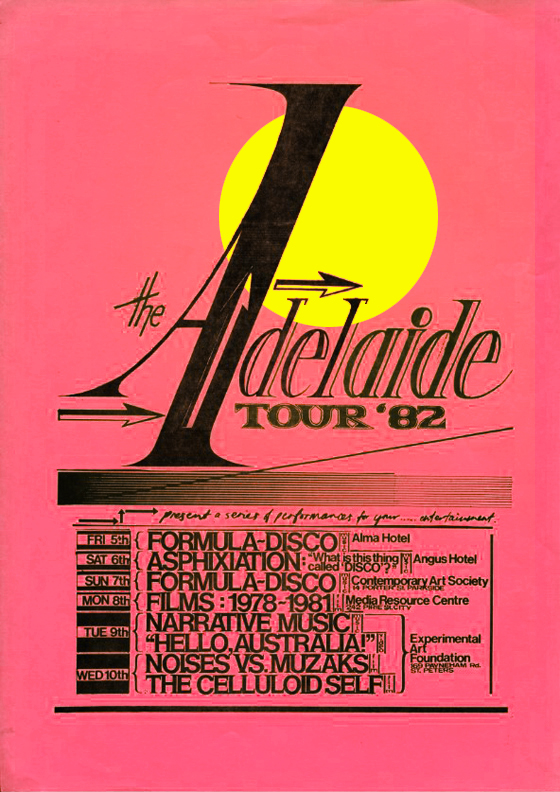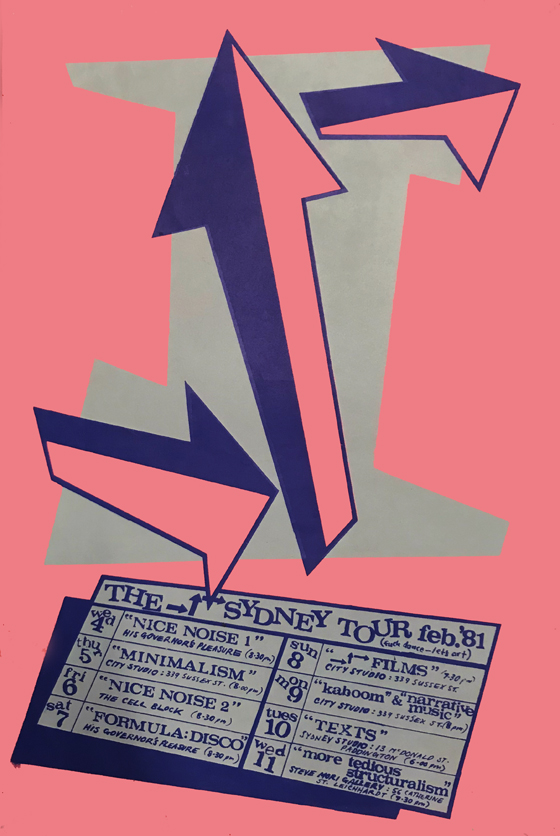a  production
production
Background
Formula Disco was a live → ↑ → project, developed as an extension of the record/phonographic project of Asphixiation. Both explore the phenomenon of the ubiquity of Disco at the time.
Philip Brophy - Maxy's, Sydney © 1982Credits
Compositions & drums - Philip Brophy
Bass synthesizer - Maria Kozic
Guitar - Ralph Traviato (1980-1982); Philip Morland (1983); Gerard Hayes (1984)
1980
Melbourne - Clifton Hill Community Music Centre; Melbourne University; Paradise Lounge; Crystal Ballroom
1981
Sydney - His Governor's Pleasure
Melbourne - Paul Craft Gallery
1982
Melbourne - Crystal Ballroom; Tiger Lounge
Adelaide - Alma Hotel; Contemporary Art Society
Sydney - PERFORMANCE 1 - Maxy's; Mosman Hotel
Geelong - NEW DIRECTIONS - Geelong Art Gallery
1983
Paris - Musée d'arte moderne; Cent Vingt Nuits
1984
Fremantle - Praxis
Perth - Murdoch University; Wizbah
Melbourne - BEAT! - Performing Arts Museum
Overview
From the original programme notes
Formula Disco is a theoretical extension from ideas worked on for the Asphixiation project. Whereas Asphixiation dealt with the writing of a Disco music based on stylistic quoting and a self-effacing representation (songs that sound "no different" from real Disco songs), Formula Disco deals with a clinical dissection of the base framework that qualifies Disco music as a type. In this light, we present the following formula designed to solve the initial problem of "how does one construct Disco music?"
Technical
The key infuences for Formula Disco were studio bands/artists who developed a strict, metronomic, almost-Neanderthal approach to composing and producing Disco music (eg. Lipps Inc, Lime, Munich Machine, Indeep, MFSB, Rose Royce, Kryptonite, Bionic Boogie, Pink Project, Space, etc.). For → ↑ →, Disco and post-punk were indefinably fused: both prioritized sonic sensation, struck anti-musician stances, were brutish with their lavish minimalism,and viewed the studio as a clinical laboratory of creation. Their studiophonic worlds afforded a porthole to ulterior spaces where artifice and a reduction of emotive expressionism were welcomed. Formula Disco took this to an extreme, by advocating a celebration of Disco at its most formulaic.
As per the theoretical chart of production which accompanied the premiere of the project in 1980, Formula Disco was based around a live trio (drums, guitar, bass synth) which performed repetitive blocks of blunt Discofied patterns while a set of sounds or tones played on an endless cassette loop (a new release by TDK at the time). Philip would insert a cassette into the deck, press play, then count in the trio. Each track followed this procedure strictly, with tracks lasting around 5 minutes. The guitar was light, crispy, and flanged; the drum kit consisted only of a kick, snare and hi-hat; and the bass synth played a basic patch with resonant expression on the attack and sustain.
For some concerts in Sydney in 1982, videos accompanied the performance: two separate screens projected close-up images of Philip's large collection of generic 12" disco covers. The vacant cut-out centre of the covers occupied the centre of the screen; the edits accentuated the various Disco stylistic graphics adorning the various covers. It was a succinct summary of the semiotic aspect of sound forged in Formula Disco.
No studio recordings were made of Formula Disco. A few live recordings somehow materialized.
Maria Kozic; Philip Brophy - Paul Craft Gallery, Melbourne © 1981




